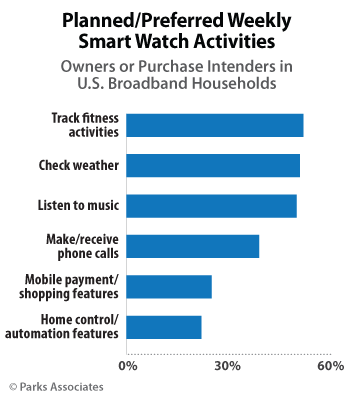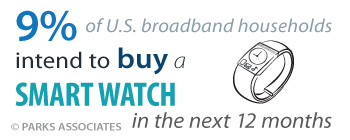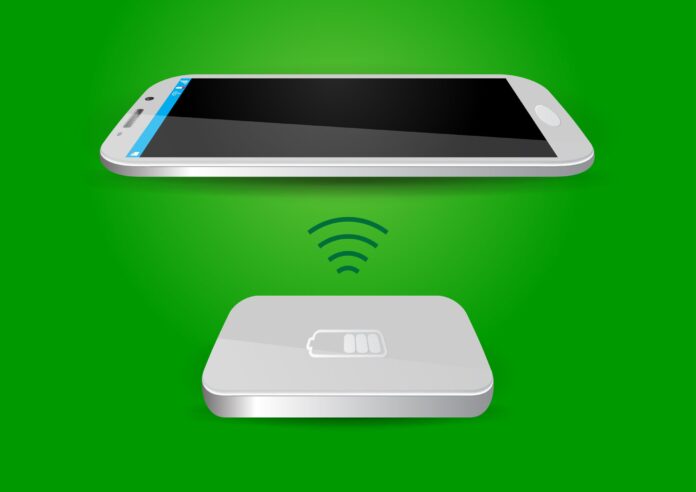Battery life is an essential feature that directly influences a consumer’s purchase decision, brand choice and subsequent usage of a wearable device. A wearable device’s small size and mobile nature limits manufacturers’ ability to use bigger or more densely packed battery cells. On the other hand, the more functions that go into a wearable device, the more energy it will require. As a result, battery life is an ultimate design challenge for wearables OEMs.

Charging the battery is a specific design challenge for wearables makers in that these devices have limited real estate for incorporating a micro-USB port. Wireless charging could free up space and benefit hardware design. Two major brands — Apple and Samsung — already use forms of wireless charging in some of their latest devices, providing a new experience for consumers and a guidepost of what is expected to come.
Convenience and an easy experience are the significant advantages of wireless versus conventional corded charging. A user can place a smart watch on a charging surface and pick it up when the battery is full — a drop-and-go experience without a tangled cord. The lithium-ion chemistry used in smartphone and most wearables batteries also copes well with the short bursts of energy delivered by wireless charging technologies.
However, an area of improvement is charging efficiency. Because energy is transferred wirelessly, 30% to 40% of it may be lost during transmission compared with wired charging. As a result, it may take longer to charge. And for a device with a completely depleted battery, the initial energy kick may not be sufficient to charge the dead battery. However, emerging wireless charging technologies are expected to correct these shortcomings.
Wireless charging standards war
The wireless charging technology market is currently in a standards war, where two consortiums are fighting to become the de facto standard. At the beginning of 2014, the Power Matters Alliance (the promoter of the Power Mat standards) announced its intention to merge with the Alliance for Wireless Power. It has since collectively battled against the current market-leading Qi standard, which is backed by the Wireless Power Consortium. On June 1, 2015, the PMA and the A4WP organizations officially merged and in November 2015, the new organization unveiled its new name — the Airfuel Alliance.
Several IC and CE companies — Intel, Qualcomm, Broadcom, Samsung and LG — are board members for each standard. Qualcomm has publicly stated its intention to push for unifying the three different wireless charging standards so the wireless charging industry can concentrate on marketing efforts for faster and broader adoption instead of competing against one another. The harmonization call has yielded some results: the PMA and A4WP merger is complete and the WPC has shown some interest in cooperating with this newly merged group AirFuel Alliance.
The hurdles to a single wireless charging standard start with the different frequencies that these solutions use. Qi uses the 150 KHz frequency band, PowerMat operates in the 300 KHz band and Rezence (the brand for A4WP’s standard) uses a high frequency band of 7 MHz. Potential solutions exist to work on all three frequencies, but optimization of a single solution’s radio performance requires fine-tuning and thus takes time. Some innovative IC vendors, such as NuCurrent, have already showcased an integrated solution that supports both Qi and AirFuel standards during CES 2016, a promising development towards an interoperable solution.
Another hurdle is business interests — specifically royalty payments to patent holders. A single standard can drive up the volume of devices and represents a lucrative royalty revenue stream. Consequently, choosing patents to be included in the patent pool for a single standard is not just a technical consideration. The passage of a single standard could face a drawn-out debate on the merits of various patents and how best to make the royalties both affordable to standards adopters and priced fairly for their respective patent contributors.
Apple’s charging strategy will influence the market. The tech giant has shown enormous interest in wireless charging and many believe that Apple will incorporate wireless charging technologies into next-generation iOS devices. Whether Apple will follow a standard or not is completely unpredictable. For instance, Apple has adopted industry standards such as Wi-Fi, Bluetooth and NFC, but chose to bypass USB. Instead, the company used a proprietary 30-pin connector, and later an 8-pin lightning connector, for its iOS devices. Apple also has its own patents on wireless charging. Two Apple patents, one in 2005 and the other filed in 2014, describe zero-contact induction and near-field magnetic resonance power supplies for Apple devices.
Outside of induction- and resonant-based wireless charging standards, new solutions have emerged and promise to make wireless charging even more effortless and efficient. Companies such as Mojo Mobility, Energous, Ossia and UBeam have shown their technologies, but commercialization and industry-wide adoption is still a long way to go.
With projected sales of more than 8.3 billion smartphones and over 400 million smart watches between 2016 and 2020 worldwide by Parks Associates, wireless charging technologies have an enormous addressable market. These numbers exclude other wearable categories from fitness trackers to connected health devices that can also benefit from wireless charging solutions. A prolonged standards fight is not in the best interest of device OEMs nor technology innovators.

Editor’s Note: Welcome to Analyst Angle. We’ve collected a group of the industry’s leading analysts to give their outlook on the hot topics in the wireless industry.

